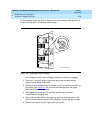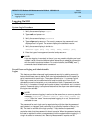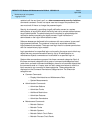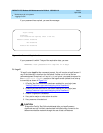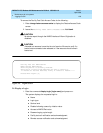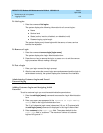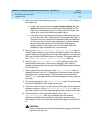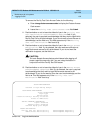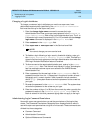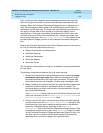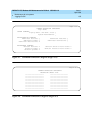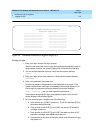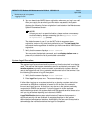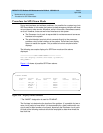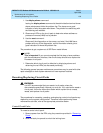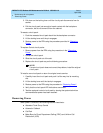
DEFINITY ECS Release 8.2 Maintenance for R8.2csi
555-233-119 Issue 1
April 2000
Maintenance for csi systems
1-33Logging On/Off
1
Changing a Login’s Attributes
To change a customer login’s attributes you must be a super-user, have
administrative permissions (specifically, the
Administration Permission
field must be set to
y
for the super-user), and:
1. Enter the
change login
name
command to access the Login
Administration form.Enter your super-user password in the
Password of
Login Making Change
field on the Login Administration form. The 3- to
6-character login name (characters 0-9, a-z, A-Z) entered with the
change
login
name
command is displayed in the
Login’s Name
field.
2. Enter
customer
in the
Login Type
field.
3. Enter
super-user
or
non-super-user
in the Service Level field.
NOTE:
You cannot change your own service level.
4. To disable a login following a login security threshold violation, enter
y
in
the
Disable Following a Security Violation
field. This field is a
dynamic field and only appears on the Login Administration form when the
SVN Login Violation Notification feature is enabled.
5. To allow access to the remote administration port, enter
y
in the
Access
to INADS Port?
field. This field will only display if Lucent Technologies
has first enabled customer super-user access to the INADS Remote
Administration Port.
6. Enter a password for the new login in the
Login’s Password
field. A
password must be from 4 to 11 characters in length and contain at least 1
alphabetic and 1 numeric symbol. Valid characters include numbers,
and!&*?;’^ (),.:- (the system does not echo the password to the screen as
you type).
7. Re-enter the password in the
Login’s Password
field. The system does
not echo the password to the screen as you type.
8. Enter the number of days (1 to 99) from the current day when you wish the
password to expire in the
Password Aging Cycle Length
field. If a
blank is entered in this field, password aging does not apply to the login.
Administering Login Command Permissions
Users with super-user permissions can set the permissions of the logins they
create. The Command Permissions Categories form displays fields to which a
user with super-user permissions can give or limit access. These commands are
divided into three categories:
■ Common Command
■ Administration Commands
■ Optional Maintenance Commands



